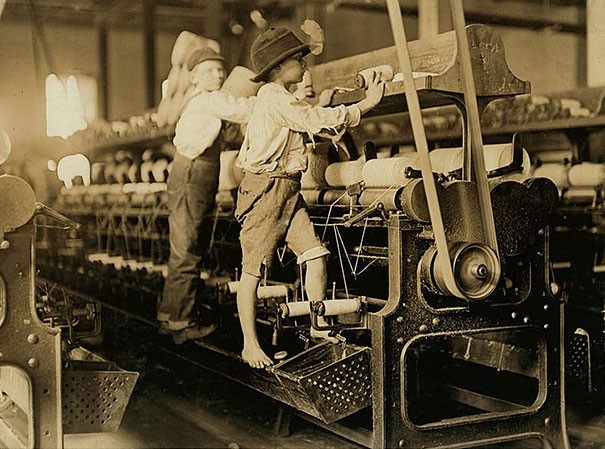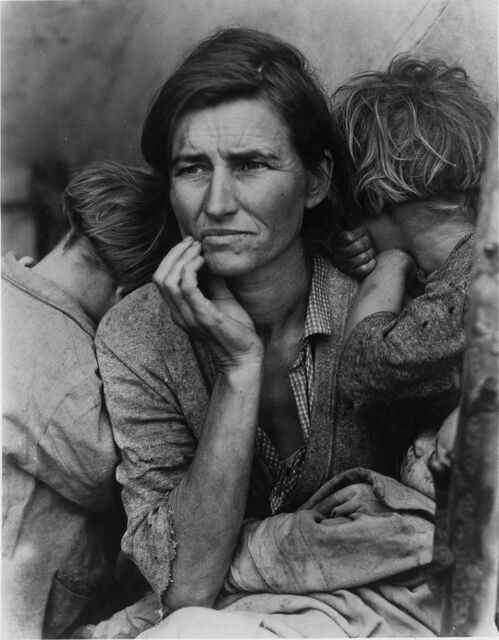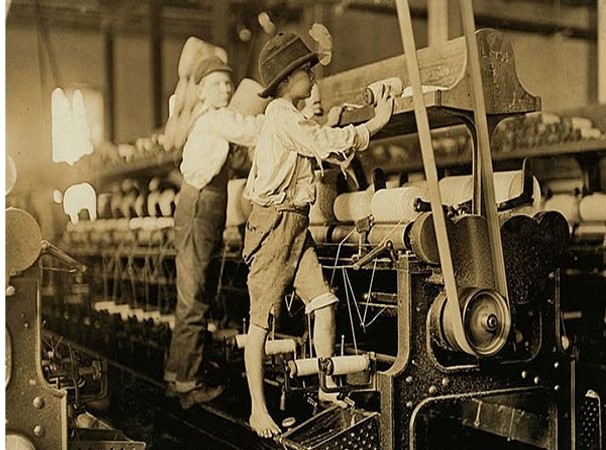Photography at its core allows the photographer to bear witness to different events and places where camera is pointed. Unlike art where the artist starts with a bare canvass and places different elements to compose an image, a photograph involves an act of deletion – whereby most of the elements from the field of view are deleted and only selected elements are kept within the frame to compose an image of appropriate meaning and beauty. So the direction in which the camera is pointed is heavily influenced by the psyche of the photographer, whereby his/her political, social, ecological, humanist and religious viewpoints determine the subject to be captured through his/her lens. Hence documentary photography can cover a wide variety to topics subjected to the philosophical outlook of the photographer. The power of documentary photography lies not only in its ability to inform the masses about events, places and people but also to evoke emotional and moral reactions from them. Hence, there can be manifold varieties in the response of the masses to a particular work of documentary photography. Although there have been vigorous debate about the nature of documentary since its inception in the late nineteenth century which runs as passionately today as it did in the past, there can be no doubt that documentary photography has played a significant role in major societal reforms over the last 150 years.
There are many news and other print media organizations, photographers, galleries, museums and curators that can take credit for the successful role that documentary photography has played in the bringing about social change using the evocative power of images. Major print news media, legacy magazines of the past such as Life and Vu, and now currently National Geographic, various museums and galleries, internet news media, blogs sites, personal internet websites of photographers are the social influencers today. The historical evolution of documentary photography to a powerful tool of societal reform was influenced by hundreds of photographers over the past 150 years. It would be important to note some of the significant contributions by a few major players in this regard.

One of the first names that come to mind is that of Lewis Hine (1874–1940), a teacher and sociologist, who developed the concept of photo story, a particular form of visual narrative that is punctuated by text (Guillaume Blanc, 2020). Given his background as a sociologist, Lewis Hine considered the photo story – the heart of the documentary photography practice. One of the major photo series Hines worked on were Climbing into America, begun in 1904, where he portrayed waves of immigrants detained for quarantine at Ellis Island (Guillaume Blanc, 2020). This helped present the immigrants as human beings who deserve sympathy and respect from the natives of New York as opposed to the widely prevailing disgust and fear, the results of years of rising xenophobia towards the immigrants.
Another major societal problem which the photographs of Lewis Hine helped to ameliorate was the problem of child labor in the US in the early 20th century. In 1906, Lewis Hine began working for the National Child Labor Committee. It is estimated that there were two million children forced to work in the United States at the time (Guillaume Blanc, 2020). This was recognized as a major societal problem especially within the urban centers of the US like New York. Therefore, there was a need to rally public opinion behind a total ban on child labor and the condemnation of the “employers” of employ children (Guillaume Blanc, 2020). Photography thus played an evidentiary role here where every time Hine made a photograph of an illegally employed child, he added to the body of evidence against child labor.

Another seminal figure in both the history of social documentary photography and the historical progression of photography as a medium would be Dorothea Lange. The FSA – or the Farm Security Administration – was a United States government agency created in the mid-1930’s to address the issue of rural poverty during the Great Depression. Lange was commissioned by the FSA to document these repercussions photographically (Cat Lachowskyj, 2018). The work she generated during that time, including her iconic image Migrant Mother, a photograph of the contemplative mother Florence Owens Thompson while her three children cling to and crawl up her body was taken in Nipomo, California at the height of the Great Depression in 1936 (Cat Lachowskyj, 2018). This image has become a pervasive symbol of the Great Depression in the United States, and in particular represents the mass migration of Americans from the Midwestern states to California (Dust Bowl Migration) that resulted from the catastrophic economic conditions and joblessness (Cat Lachowskyj, 2018).

Lange together with her husband Paul S. Taylor, a professor of political economy developed a technique of combining text and images, which allowed them to harness photography as a vehicle for informative messages that helped guide the viewer’s interpretation of the image (Cat Lachowskyj, 2018). She used the same idea in her work for the FSA, producing some of the most powerful images of the program. Lange’s work shows great sensitivity and a genuine concern about the social issues of her time and generally falls within the realm of photographic activism – i.e., projects where photographs were made with intent to fit an overall narrative surrounding an event or social issue.
From the 1940’s onwards, documentary photography experienced a radical renewal. Its traditional forms, focused on sensitive subjects, were seen as synonymous with the Depression years, and lost significant popularity and interest amongst the general masses (Lisa Hostetler, 2004). People craved much more lyrical, spontaneous, unscripted and less ideological photography, which would be capable of painting a picture of everyday life. Documentary photography became less concerned with narrowly conceived social issues, and instead began to archive daily life, with each photographer nevertheless developing a preference for some aspects of daily life more than others (Lisa Hostetler, 2004). The following decades are known as the golden age of photojournalism. From the 1930s to 1950s, the appearance on the market of high-quality portable cameras, such as the famous Leica, afforded photographers new freedom. The Leica was an immediate success and was responsible for popularizing 35mm film photography by many of the master photographers of the time including Henri Cartier-Bresson (Lisa Hostetler, 2004). It can be argued that the style and content of much of urban documentary photography of this period can be considered as the germinating seed of what is commonly known today as “street photography.” In this time period (1950s and early 1960s), many American photographers reinvented the documentary tradition. The prominence of this new wave of documentary photography finally found its acceptance in 1967 when John Szarkowski, the photography curator at MoMA, put together an exhibition entitled New Documents, which showcased the works three young photographers: Diane Arbus, Lee Friedlander, and Garry Winogrand (Guillaume Blanc, 2020). These photographers stood apart from their predecessors in that, rather than working towards social reform, they sought to capture their own experience of society, viewed with empathy and without any semblance of moral judgment (Guillaume Blanc, 2020).
It is thus seen that documentary photography has undergone multiple revisions and evolutions since its inception over 120 years ago. There are as many different ways to look at documentary photography as there are photographers and so this is a rich and diverse genre in photography. The informative power inherent in documentary can move entire societies to take corrective action against conditions that adversely affect people, wildlife, forests and other aspects of nature. This power of documentary has also played a significant role in the development of capitalism across the world in the past 70 years where photographs have been widely used in advertisement campaigns of just about any imaginable object. As the author Audrey Hoareau famously once said “It’s not random that the history of consumer culture and the democratization of photography coincide. Historically, photography supported capitalism’s development” (Diane Smyth, 2002). It is my earnest desire that this course of action will be reversed in the foreseeable future. The recent COVID-19 pandemic along with the widespread effects of climate change such as rising temperature across the world, giant cyclone storms, massive de-forestation, mass migrations and other such problems should highlight to evils of uncontrolled capitalism and greed to all the nations of this world. I hope that immense power of documentary photography can be used to inspire the world to move away from the ultra-consumerist socio-economic world order to a world which is more peaceful and less competitive, more compassionate and less greedy, more thoughtful and less judgmental.
Bibliography:
- Blanc, G. (2020) A History of Documentary Photography, Part II.
- Lachowskyj, C.(2018) Photography and Social Change: Dorothea Lange and the Politics of Seeing.
- Hostetler, L. (2004) The New Documentary Tradition in Photography.
- Smyth, D. (2002) Capitalism and the camera: an exploration of photography’s intrinsic relationship with the economic structure.
Contact:
Mustafa Habib Chowdhury
Email: [email protected]
Facebook: https://www.facebook.com/mustafa.h.chowdhury
Instagram: https://www.instagram.com/mustafahabibchowdhury/

